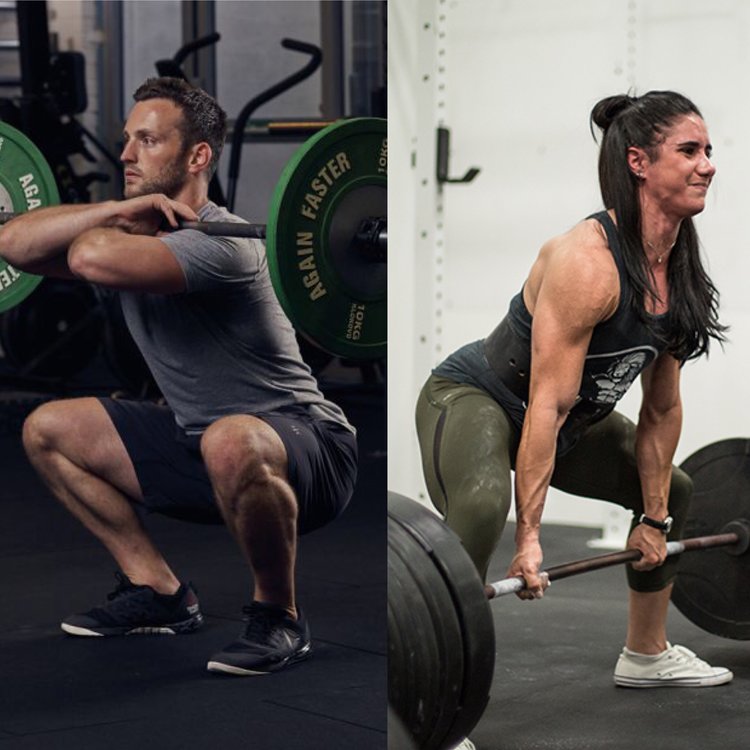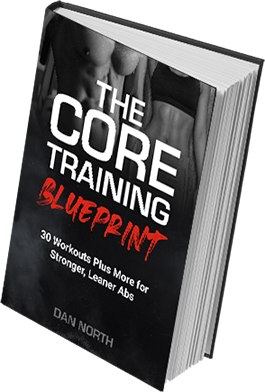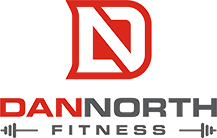If you’ve been lifting weights for a while, you know deadlifts and squats are the two kings of the iron. If you’re new to weight training, you might have thought that you can potentially injure yourself doing these movements. You also might have wondered which one is better for getting stronger and making your butt bigger. Let’s put your mind at ease.
First, let’s get some of the mistakes out of the way.
What are some common deadlift and squat mistakes?
Not warming up enough: This is a common mistake in general, not just with squats and deadlifts. But with movements that are so demanding on the body (ie. squats and deadlifts), you have to prepare your body by warming up. If not, that’s when potential injuries can occur because you didn’t warm up enough or you may be…
Prematurely lifting too heavy: I know I did this a lot when I first started lifting weights, and maybe you’re doing it too. Walking into the gym, lifting the heaviest weight you can, resting a bit, and repeating until you can’t do it anymore. My thought process when I was younger was, “ok, when I first start my workout I’m fresh and have a ton of energy, so that means I can lift the most weight right now.” Now that actually kinda makes sense to someone who’s new to lifting weights. But you’ll find there are a lot of underlying issues that contradict this way of thinking. One is the fact that you can’t just walk into the gym and lift heavy without warming up and not put your body in a vulnerable position. We can’t go from a “cold state” to high intensity (0-100 real quick) without preparing our body and our mind. Warm up sets and gradually increasing the weight until you are at your working weight give you time to:
- increase your body’s core temperature
- gradually build up your joint and ligament resilience so it can handle heavier loading
- build confidence by practicing high quality reps
- and focus on proper form.
Not focusing on proper form: We all want to be strong and some of our egos get in the way of us making actual progress because we focus too much on the weight we’re lifting while completely throwing proper form and execution out the window. Here’s the thing: IF YOU FOCUS ON PROPER FORM FOR EVERY SET YOU WILL GET STRONGER AND YOU WILL BUILD MORE MUSCLE. PERIOD.
Not resting enough between sets: Weight lifting puts a toll on our bodies and requires energy output to perform. In order to perform a heavy squat or deadlift, our bodies use an energy source referred to as ATP, which helps our muscles contract during high intensity movements like weight training. That energy storage gradually decreases as we exercise, and the only way to help regenerate that ATP storage is to rest. Often, people do not rest enough between sets because the common mindset mistake when training is “more is better” so people get fidgety and feel bad resting between sets.
Two things here:
- In order to get the benefit of lifts like squats and deadlifts, you are required to rest in between sets. That, my friend, is non-negotiable. Why? In order to generate enough force to increase your strength, you need to have enough ATP storage to engage your muscles to perform the lift. If your goal is strength, usually 2-4 minutes is the recommended amount of rest to allow your body to fully recuperate.
- If you feel like “you don’t need to rest that long” in between sets, you aren’t lifting heavy enough. The five reps you’re doing need to be five hard fucking reps. Not weights you can lift while maintaining a conversation with your buddy. You need to lift weights that require you to be fully engaged if you want to actually get stronger.
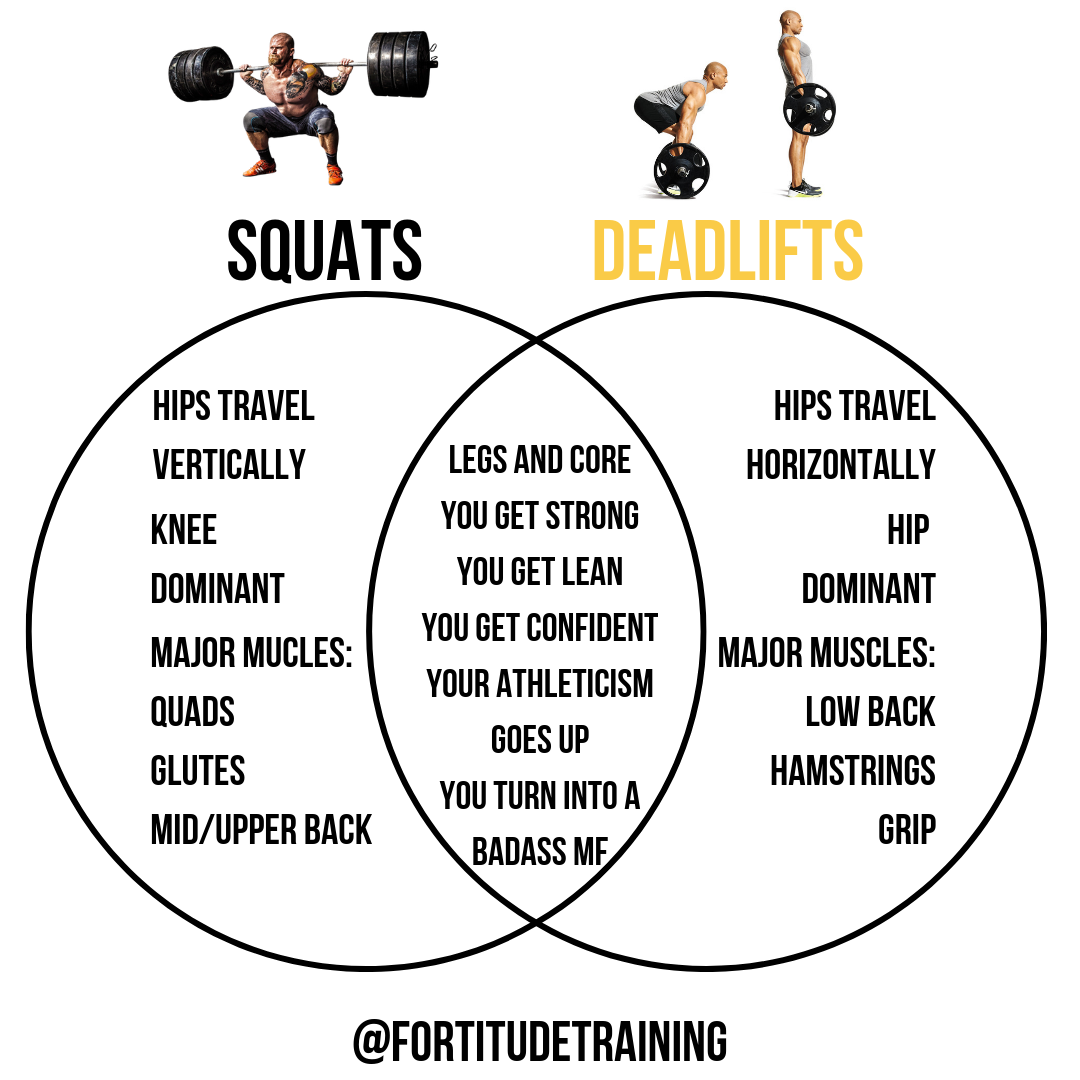
Which one is better?
Neither. They’re both awesome, and they’ll both give you a shit ton of benefits.
- They get you strong AF.
- They add muscle. Serious. Muscle.
- They make you more athletic.
- They give you a wicked energy boost.
- They make you lean.
- They make you a badass.
The thing you should know about deadlifts and squats is how your hips travel during the movement. In a deadlift, your hips travel on a horizontal (back and forth) path, while your hips travel vertically (up and down) during squats. And since both lifts are very hip-dominant, that affects torso positioning as well.
When you deadlift, you are hinging at the hip, where your torso “leans” over slightly depending on your height so you can use leverage to help with the lift. When you squat, your torso is in more of an upright position so you are able to push through the floor and use your legs more effectively.
Your Hips Travel Vertically (Up and Down) During Squats
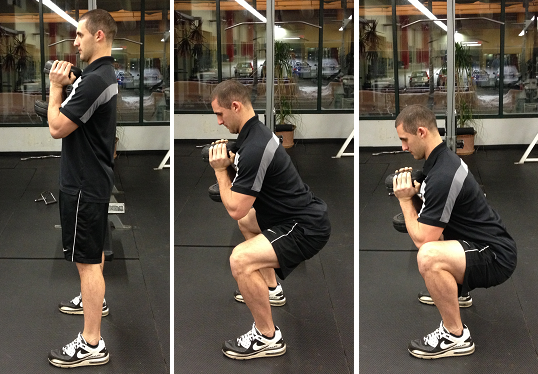
Your Hips Travel Horizontally (Back and Forth) During Deadlifts
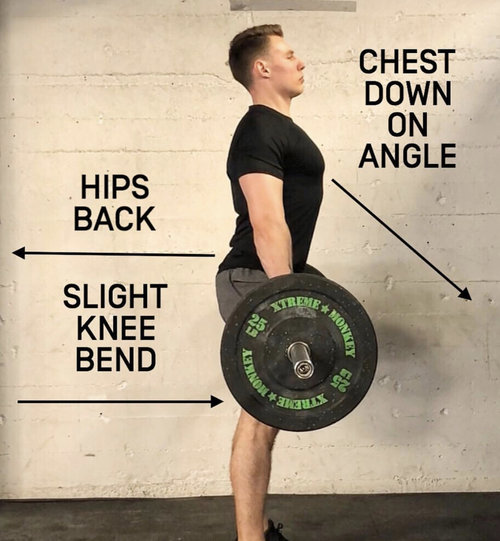
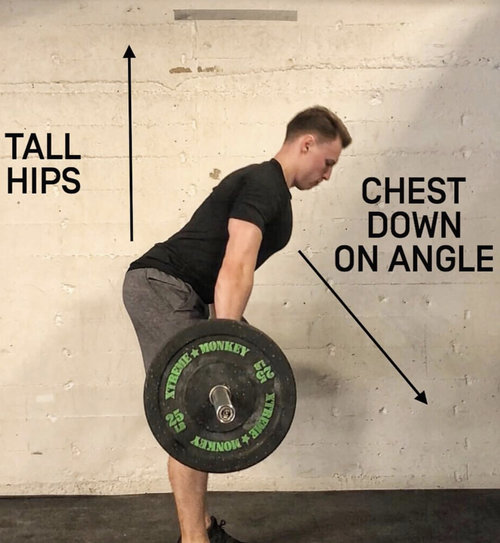
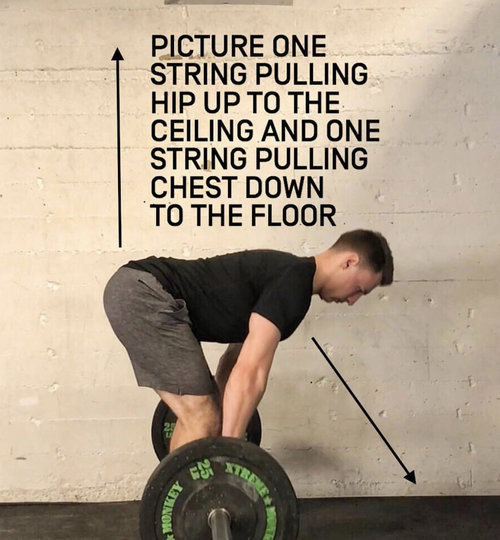
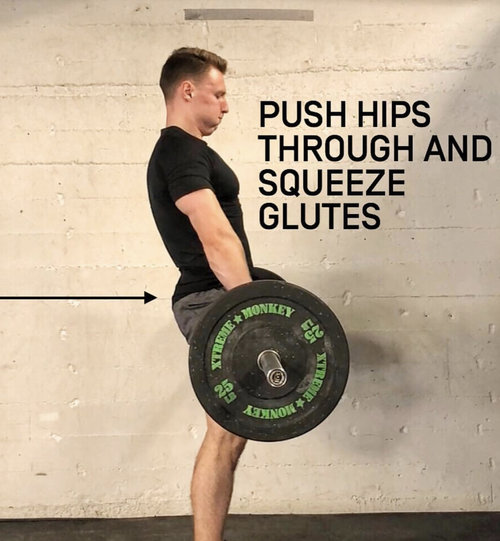
Which muscles are used during deadlifts?
Remember, deadlifts are a hinging exercise. When you hinge forward at the hip in order to pick weight up off the floor, your body recruits your posterior (back of the body) muscles to bring your hips back up to full extension (standing straight up). No matter what kind of deadlift you’re doing (Romanian, stiff legged, sumo, conventional, single leg, etc.), you are going to be using a combination of your posterior muscles along with other supportive muscle groups:
- Lower back muscles (erector spinae)
- Hamstrings
- Glutes
- Quads
- Core (all muscles of the core)
- Mid and upper back muscles
- Forearms (grip)
Which muscles are used during squats?
With squats, your hips are moving up and down, and your body is supporting the weight throughout both phases of the movement. Like deadlifts, there are tons of ways you can perform squats. Different squats provide different outcomes from the body in regards to muscle and strength development. Even so, it doesn’t really matter what type of squat you do (back squat, front squat, goblet squat, etc.), you’re always going to be engaging a combination of the following muscles:
- Quads
- Glutes
- Hamstrings
- Core/lower back muscles
- Upper back muscles
Which one makes you stronger?
No matter what your fucking goal is, whether it’s to lose weight, build muscle, gain strength, win a UFC belt…there is no such thing as “the best exercise”. It’s how you perform and incorporate a combination of exercises that work together to build up your strength. Between squats and deadlifts, they are both amazing exercises that get you strong af.
Concentric vs. Eccentric
Before we get into it, most of your favourite exercises (squats, deadlifts, push ups, bench press, curls, etc.) have a concentric and eccentric phase. For example, the concentric phase of a biceps curl is when you bend your elbow and curl the weight up. The eccentric phase is of course when you lower the dumbbell back down.

Deadlifts are concentrically dominant during the initial phase of the movement; meaning the hard work is lifting the weight off the floor before putting it back down.
Why?
Well, think about it. When you set up for the deadlift, the weight is on the floor. Your job is to pick the weight up and put it back down. Picking it up is the hard part, after that it’s just a matter of maintaining tension in the body and lowering the weight in a controlled manner. Some people tend to fuck off during the lowering portion and just drop the weight. That’s fine if you’re working up to a max weight (as heavy as you can lift for a certain amount of reps), but for most people looking to build strength and add muscle, lowering the weight with control during the eccentric phase is the way to go.
Squats are eccentrically dominant during the initial phase of the movement; meaning you have to lower yourself into the squat eccentrically before pushing back up to a standing position. This is important to understand because your body is stronger during eccentric phases of exercises, meaning it can handle more resistance. So even though you can lower yourself into a squat with a certain amount of weight, it doesn’t mean you’re always going to be able to push yourself back up! So when you un-rack the bar or are holding a dumbbell or kettlebell in front of your chest and you’re about to do your squat, you are fighting hard right away to stabilize your spine while going down before you have to push through the floor to return to your standing position.
In terms of muscle development…
Squats and deadlifts both add muscle, and they both work similar muscle groups (as you saw above). As you also know, there are soooo many fucking ways you can squat and deadlift. The reason that’s important to know is because when you perform a different variation of a movement, let’s say a squat, you are altering your body positioning during the exercise. Since you are changing how your body is set up during the movement, your body is required to engage different muscles in order to perform the exercise.
So yeah, squats and deadlifts both work to get you a bigger butt and stronger legs, but if you want to get specific, think about the way your body is positioned during different variations of squats and deadlifts to specifically target different muscles.
Some examples of the many deadlift variations include:
- Conventional (strength, lower back, hamstrings, glutes, grip)
- Sumo (strength, quads, lower back, glutes, grip)
- RDL (lower back, hamstrings, glutes, grip)
- Stiff Legged (hamstrings, lower back, grip)
- Single Leg (hamstrings, lower back, grip)
Some examples of the many squat variations include:
- Goblet (quads, core, upper back)
- Back (glutes, quads, hamstrings, upper back)
- Front (quads, core, upper back, glutes)
- Box (glutes, hamstrings, quads)
- Zercher (glutes, core, upper back, arms, core)
When/how often should you squat and deadlift?
The answer to that is completely dependent upon a combination of individual factors like your goals, training age (how long you’ve been lifting weights), actual age, lifestyle, etc. For the “average person” (I’m not even quite sure what that means to be honest) looking to get stronger and add muscle, performing some kind of squat at least once per week and one deadlift/hinge-dominant movement once per week is a good starting point.
Realistically, you can squat more frequently (and should work up to a more frequent basis) given how fundamentally important the movement is (we’ve been squatting, historically speaking, for a long-ass time). I would also argue that you should squat more frequently than you deadlift.
Why?
A couple reasons. First, your body can handle more squats than it can deadlifts. Deadlifts, although a great exercise, requires a lot out from our lower backs given it’s hinge-dominant movement patterns. You can and should be training hinge and extension exercises frequently to maintain optimal posture and a healthy lower back, but it doesn’t always have to be deadlifts necessarily.
Also, you can actually maintain or even sometimes increase your deadlift strength by squatting (and not deadlifting). WTF? Well, when you think about it, squats work a lot of the same muscles deadlifts do, without putting as much wear and tear on the spine. The bottom position of a deadlift requires you to push through the floor with your legs, use your glutes to support your back until your hips reach full extension. Squats do all of this. You can incorporate squats for the obvious leg gains and extension exercises to strengthen the lower back to get a stronger deadlift without having to deadlift so frequently. This is going to save your back some punishment and when it comes time to actually deadlift, your body (and your mind) aren’t going to be completely fried out.
Key Points
- Common mistakes between squats and deadlifts include not warming up optimally, prematurely lifting too heavy, not focusing on form, and not resting enough in between sets.
- Your hips travel vertically (up and down) during squats.
- Your hips travel horizontally (back and forth) during deadlifts.
- Both get you stronger and add muscle, depending on which variations you perform.
- You can squat and increase your deadlift without having to deadlift so frequently.
Thanks for reading and if you have any comments or questions, shoot me a message down below!!!


